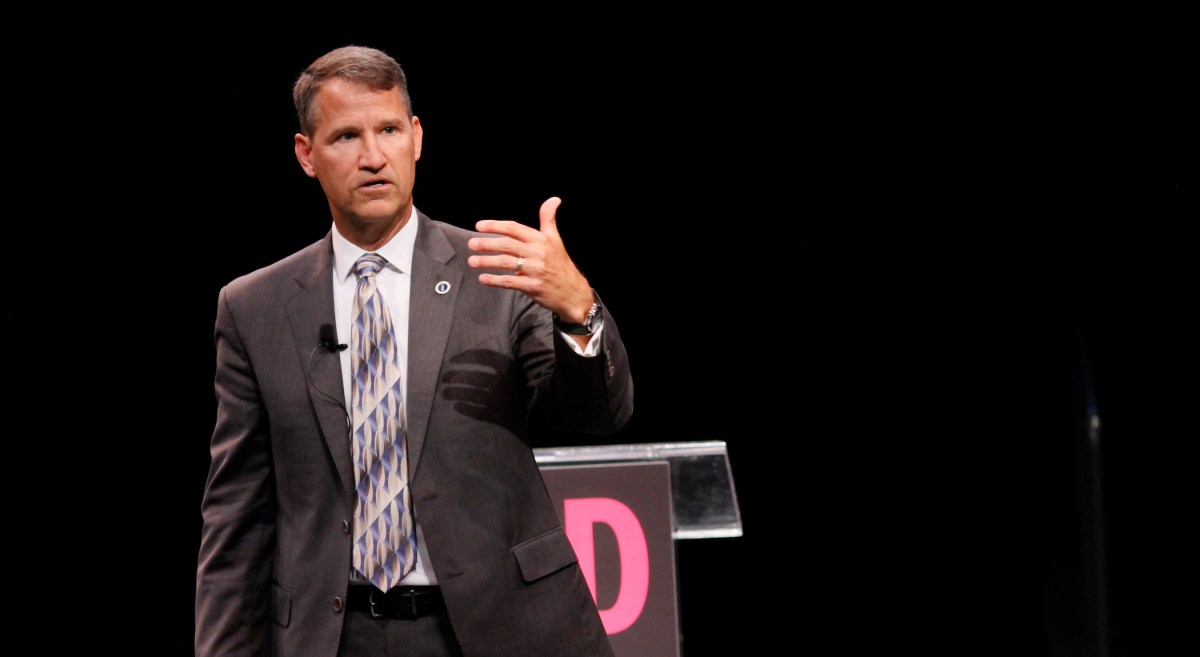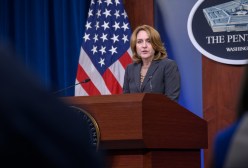As Bill Marion departs, he urges Air Force to ‘continue accelerating’ to IT modernization

Bill Marion has a message for the Air Force and its IT leadership as he steps away after nearly three decades of service: Continue accelerating.
During his tenure as deputy CIO, the seniormost civilian IT and cybersecurity official in the Air Force, Marion has led the service to better align its IT strategy, funding and delivery for modernization success. When he steps away from the role at the end of April, he hopes the Air Force will continue headstrong in that direction driving modernization.
In an exit interview with FedScoop, Marion tipped his hat to “a chief and secretary that are truly driving and understand the need for a digital Air Force and Joint All Domain Operations. They’re investing and we’re organizing and we’re delivering on that vision,” he said, referring to Secretary Barbara Barrett and Chief of Staff Gen. David Goldfein.
“The challenge always in government is do you have the funding? Do you have the people? Do you have the leadership? Do you have the vision? Do you have the plan?” Marion said. “And I can confidently say we’ve got those in place, and now it’s further acceleration to delivery.” He added: “We’re budgetarily in a place that we haven’t been in a decade or two.”
As proof, Marion rattled off a list of successful modernization programs the service has developed in recent years: enterprise IT-as-a-service, Cloud One, Kessel Run and Fast Track ATO, as well as the all-important Joint All-Domain Command and Control (JADC2) that they all enable.
Those who come after him must “keep the hammer down,” he said. “Keep the innovation in the strategy and keep delivery sound because wins breed more wins. It drives the funding that drives the investments we need to modernize. So keep innovating inside of the strategy, keep driving the funding side of that to make it real.”
An opportunity to modernize in crisis
Like every federal agency, the Air Force’s normal operations have been affected by the coronavirus pandemic. But rather than seeing the large-scale transition to telework as a challenge or disruption, Marion has spun it as an opportunity to address pressing modernization needs.
“So the COVID-19 crisis, if we do this right, it allows us to address some of the digital modernization needs, the increase in mobility and cloud utilization and cybersecurity — they very much align with what we’ve already put in place. It’s just starting to accelerate,” he said.
The progress made today during the pandemic doesn’t need to be just part of a temporary response — it can have a lasting impact on the Air Force’s already-established modernization priorities.
“Teleworking demands a new ecosystem,” Marion said. “It demands digital, demands mobile, demands cloud and demands a new network. So we’re just using the opportunity to solve both problems and to accelerate the digital Air Force plan. So that’s really what we’ve doubled down on.”
All of which are things the Air Force had already set its sights on, just “the crisis has drawn us to make those decisions much more quickly.”
“What can we do with 5G? What can we do to continue to leverage Cloud One to scale out capabilities? How do we continue the mobile work that we’ve done, adding many more users in the mobile space?” Marion said.
Challenges remain
Marion pointed to a variety of challenges he faced as deputy CIO that will extend well after he’s gone. Enabling a digital workforce in the Air Force is a topic he came back to several times during the interview.
“We need to continue to focus on the workforce,” he said. “Now it’s even more critical because not everybody’s got data skills. Not everyone’s got analytics or coding skills. Not everyone’s got a digital workplace skill. So how do we continue to modernize in that world?”
A more skilled workforce will help the Air Force combat other challenges it faces with its IT, like communicating the business case for technology modernization.
“IT traditionally is a cost center. I think our chief and secretary recognize it’s not just a cost center, it’s part of operations,” Marion said. “But there’s always going to be a huge, huge appetite to cut IT for other programs. So fighting that is a big challenge.”
To effectively communicate with leadership about IT needs and how they are critical to mission success is a skill in and of itself — from the CIO level down to the individual airman, Marion said.
“Joint All Domain Operations: that world is all about data. It’s all about connectivity. It’s all about getting the right data to the right person at the end of the line,” he said. “And so making the relation between why does 5G matter to an airman? Not just because he wants an iPhone to work, but because he’s got to get access to data wherever he is in the world. Or why is Cloud One important? Well, it’s about a [command and control] application that helps scale to meet a mission need.”
And finally the perpetual challenge of cybersecurity: The Air Force should continue down the road of being more thoughtful in managing and accepting risks versus ensuring basic compliance.
“We’ll continue to look at cybersecurity from a larger picture and not just a very technical perspective,” Marion said. “People get comfortable in compliance, and it gets really uncomfortable when we’re accepting risk because it’s a little bit more subjective. In the world, speed matters. In cybersecurity speed matters. And so I think there’ll be a constant rub, especially as we transition to things like zero trust architectures where we put more of the data security away from the network.”
Marion will move home to Austin, Texas, and take a role in industry. He couldn’t yet reveal his next role but said it will be closely tied to digital transformation, “but on the other side of the wall, if you will.” Arthur Hatcher, associate deputy CIO, will fill the role in his absence while the Air Force hires a full-time replacement.




